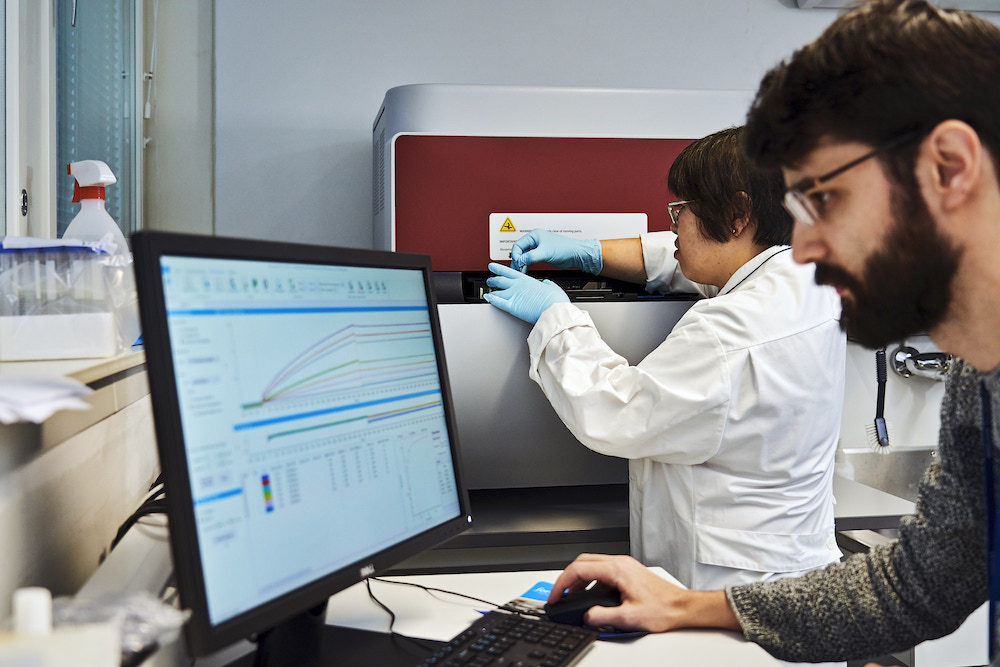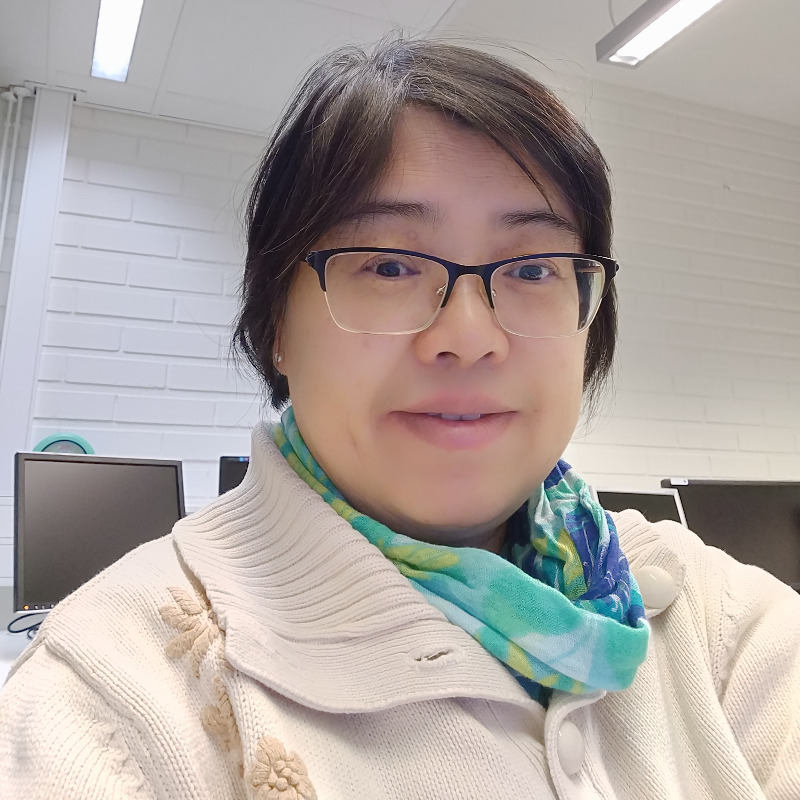View All Molecular Biophysics at Instruct
Biocenter Oulu Molecular Biophysics core facility offers multiple technologies for analysing secondary structure and stability of biological macromolecules, biomolecular interactions and enzyme kinetics.
The Octet RED384 Bio-layer interferometry is used for measuring molecular interactions in real time for the purpose of detection, quantitation and kinetic analysis. The system has measurement capacities ranging from 102-107 M-1s-1 for the association rate and 10-6-10-1 s-1 for the dissociation rate. The affinity constant KD ranges from mM to pM. A number of specific biosensors are available from the manufacturer.
The Chirascan circular dichroism spectrometer is used to analyse the secondary structures of macromolecules. The measuring wavelength range is 1150-165 nm. The system includes a temperature control device for thermal-denaturation analysis that applies melting temperature measurement. In addition, an auto-titration unit and a stopped-flow unit can be associated for titration and kinetics experiments.
The Prometheus nanoDSF is used for characterizing the stability of proteins. The system generates unfolding temperatures (Tm and Tonset), critical denaturant concentrations (Cm), free folding energy (ΔG and ΔΔG), and aggregation results (Tagg). The measurements are under native conditions without dye-labeling. The measurement requires 10 µL in volume and 5 µg/mL in concentration. 1-48 samples can be analysed simultaneously.
Dynamic light scattering (DLS) can be used for example for assessing the quality of purified protein samples; it can analyze whether the sample is monodisperse and free of aggregates. It can also be used for size determination of proteins and for determining critical micelle forming concentrations. The DynaPro plate reader device is very user friendly, and it can read protein samples directly on multiwell (96-1536 well) plates. This makes the device very efficient for screening optimal buffer/additive conditions for protein solutions also making the measurements fast.
Isothermal Titration Calorimetry (ITC) is used to study the binding behavior of biomolecules. The Microcal ITC200 calorimeter directly measures the heat released or absorbed during a biomolecular interaction. It determines binding constants (KD), reaction stoichiometry (n), enthalpy (∆H), entropy (ΔS), and Gibbs free energy change (ΔG). The data provides useful information in structure-function relationships and binding mechanisms.
Multi-Angle Static Light Scattering (MALS) can be used to determine the molecular weight, the oligomeric state and the homogeneity (monodispersity) of the protein or protein conjugates. It can also be used for characterisation of various polymers. We have a Wyatt MiniDawn MALS detector connected to the Shimadzu HPLC unit together with a refractive index (RI) –detector (Shimadzu) for determination of the protein concentration of samples eluted from a size exclusion chromatography column. A small sample of 10-100 μL with a protein concentration of 1-5 mg/ml is sufficient.
The Infinite M1000 Pro multimode plate reader is a fast and sensitive instrument that can measure well plates using different techniques including absorbance, fluorescence intensity, fluorescence polarization, time-resolved fluorescence, luminescence and AlphaScreen. It can read plates with up to 1536 wells. The plate reader is based on monochromators enabling flexible wavelength selection between 230-850 nm. The instrument has also dispensers for adding reagents to the wells during the measurement protocols.
The Jasco V-660 spectrophotometer is a double monochromator, double beam instrument used for steady state enzyme kinetic measurements. The 6-position water thermostated automatic cell-holder (10 mm path-length) enables measurements of six samples in one run, making for example the measurement of Km, kcat as well as Ki fast to perform. There is also an 8-position water thermostated automatic cell-holder for 5 mm rectangular cuvettes. The stirring option using magnetic beads is available for sample mixing.
Stopped-flow instrument is a rapid mixing device combined with a spectrofluorometer used for pre-steady state kinetic measurements. We have a TgK Scientific Hi-Tech KinetAsyst Stopped-Flow system, which can be operated in a single and double mixing mode and which can be used to detect absorbance and fluorescence signals. There are three light sources (Xenon, Xenon-Mercury and Tungsten), three photomultipliers, a rapid scanning CCD detector and a set of cut-off filters providing versatile possibilities for measurements. Fluorescence polarisation accessory is available for polarisation/anisotropy detection. With the standard cell, the dead-time of the instrument is 1-2 ms and the minimum shot volume is 40 µl.
Biacore T200 Surface Plasmon Resonance is used for label-free biomolecular interaction analysis. It monitors the formation and dissociation of biomolecular complexes on a sensor surface, where the ligand molecule is immobilized. The real-time binding measurement is performed by injecting the testing analyte in solution. The system has measurement capacities ranging from 103-109 M-1s-1 for the association rate and 10-1-10-6 s-1 for the dissociation rate. The affinity constant KD ranges from mM to fM. It also has a possibility to measure thermodynamic parameters.




